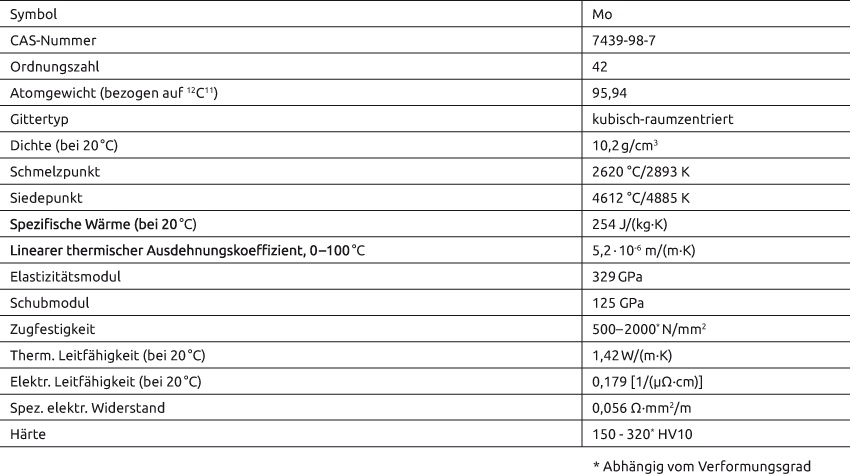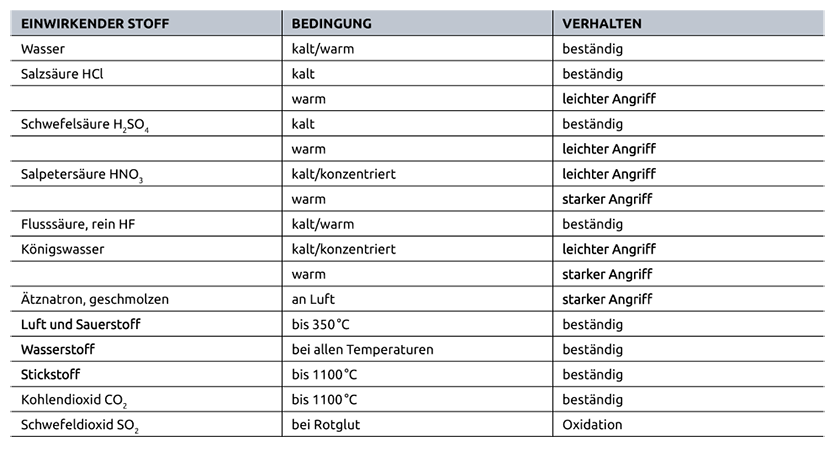Molybdenum & molybdenum alloys
Metal with a dazzling array of attributes
Wide-ranging industries rely on our molybdenum products.
Wide-ranging industries rely on our molybdenum products.
Molybdenum as a metal is not quite as well known as tungsten. It has a lower melting point and is commonly used in the following industries:
Molybdenum is a 5th period transition metal. The high-strength, tough and hard metal is a glossy, silvery white. It has the highest melting point of all the 5th-period elements. And while still a very hard metal, it is softer and more ductile than tungsten. Just like its big brother tungsten, it is impervious to reducing acids (even hydrofluoric acid).
Oxidising acids such as hot, concentrated sulphuric acid, nitric acid or nitrohydrochloric acid (aqua regia) lead to high removal rates. Molybdenum is also not resistant to oxidising molten alkalis.



TZM, with a composition of 0.5 percent Ti, 0.08 percent Zr, 0.03 percent C and Mo, is one of the best-known molybdenum alloys around. It is produced either powder metallurgically or via an arc-melting process. Compared to pure molybdenum, it has a higher recrystallisation temperature, is stronger and forms more easily at room temperature. These effects are due to mixed crystal formation between Mo and Ti as well as the precipitation of ZrC as a dispersoid.
TZM can be used in many ways (e.g. in vacuum furnaces, as forging tools, in X-ray technology). It lends itself to applications like these thanks to favourable material properties:
Its optimum application temperatures are between 700 and 1400°C in a non-oxidising atmosphere.

The mechanical properties of molybdenum can be effectively boosted through doping with 0.3-0.7% by weight of finely distributed lanthanum oxide particles. Forming a staple fibre structure tremendously increases the strength, ductility, recrystallisation temperature and creep resistance.
MLa can be used at temperatures of up to 1800°C. Typical applications include heating conductors, lighting technology, sintering boats and furnace construction.